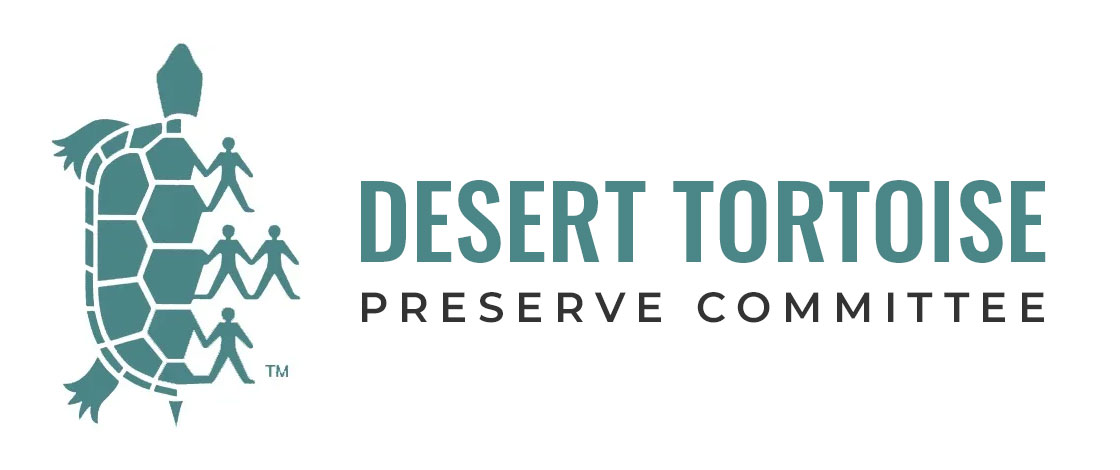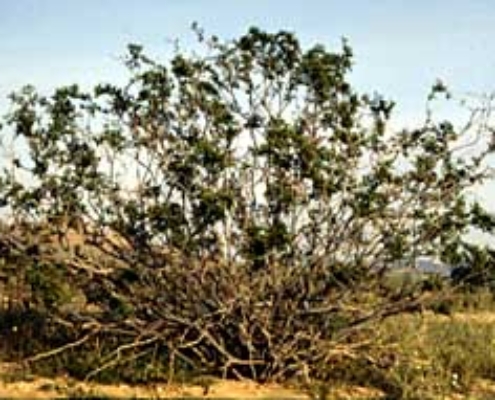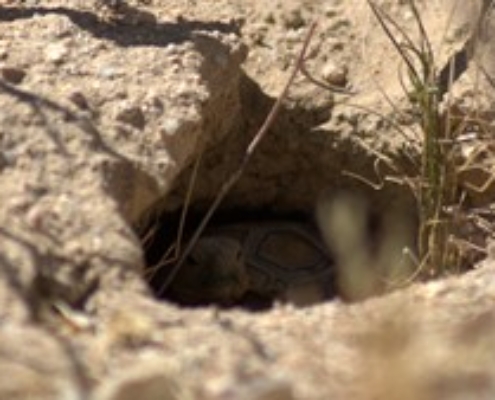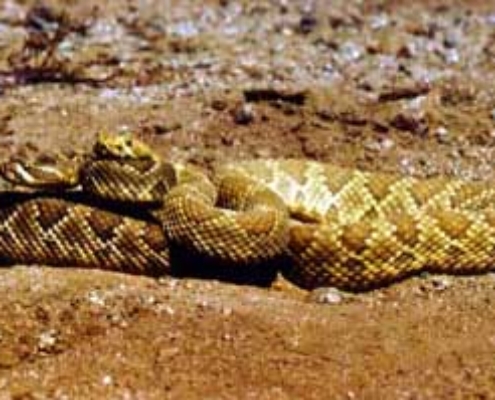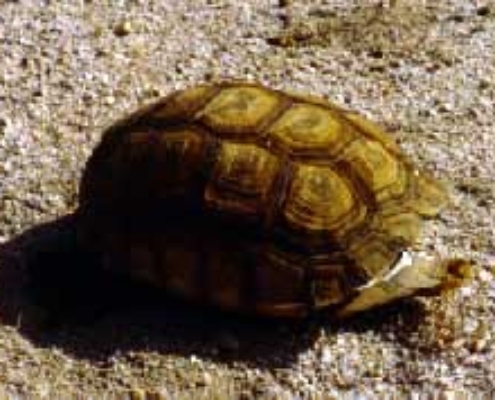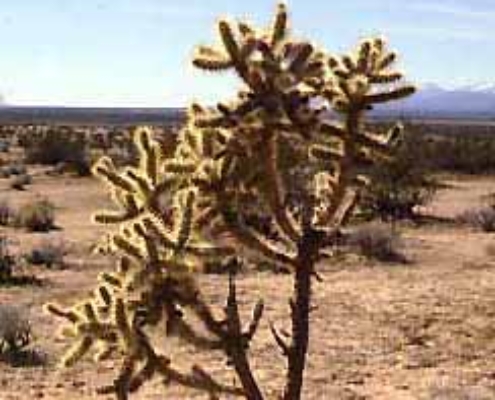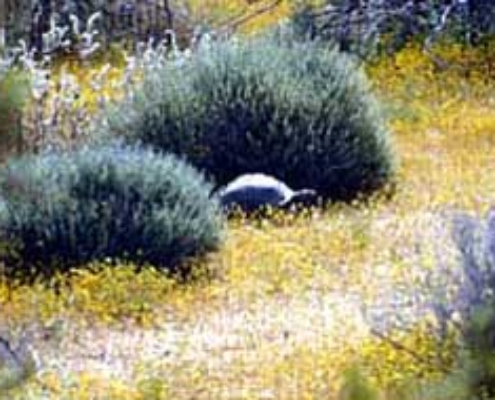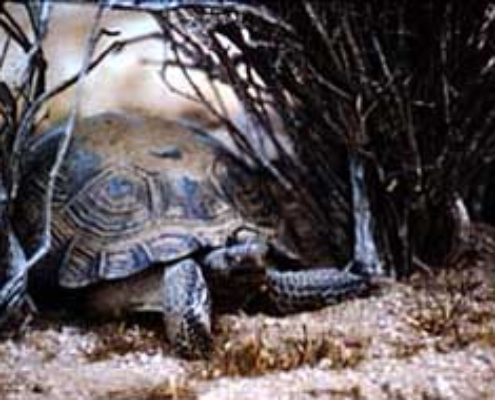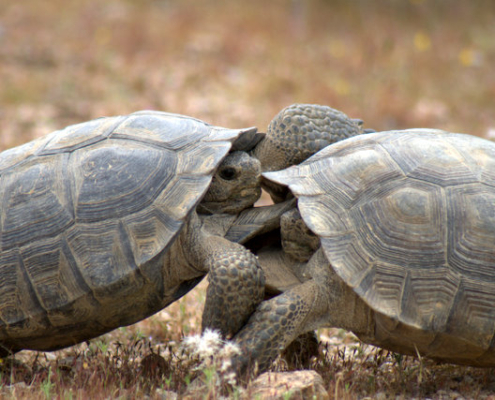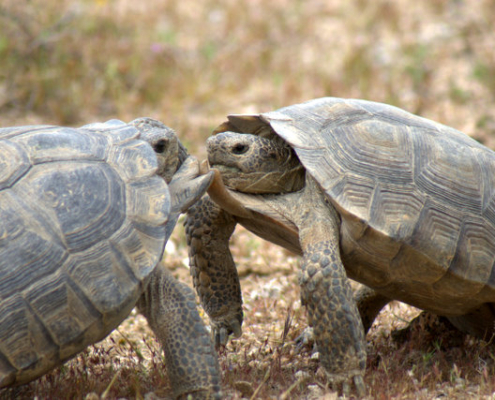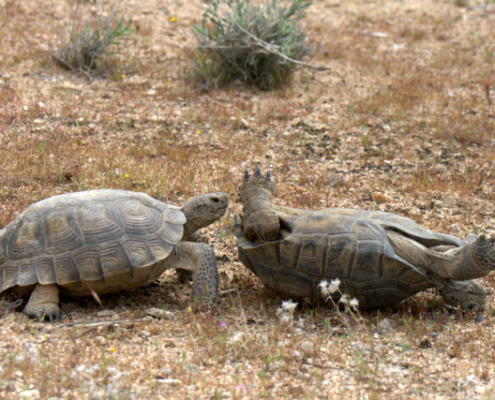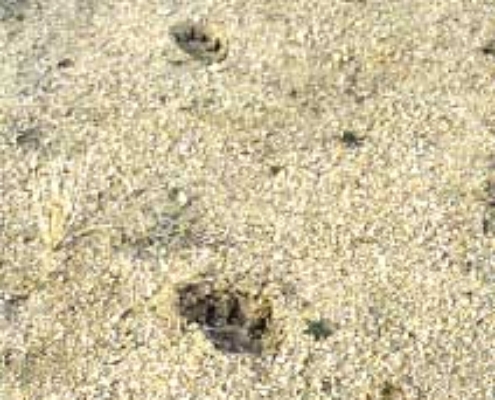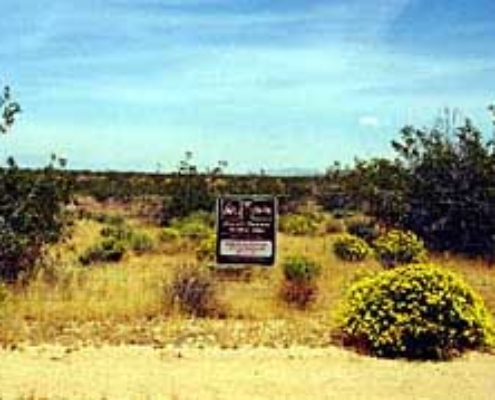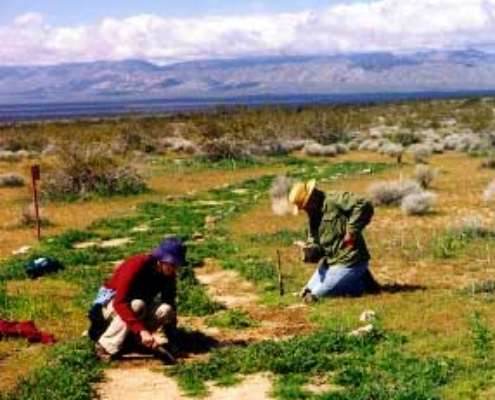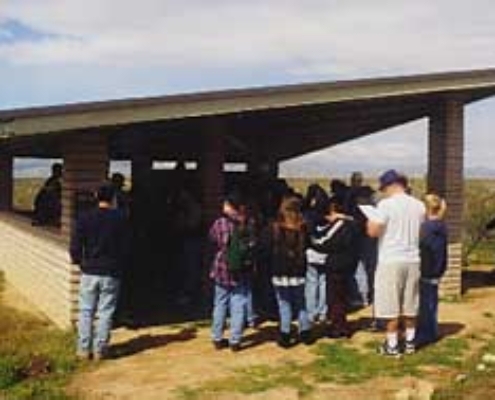DTRNA Virtual Field Trip
The Desert Tortoise Research Natural Area (DTRNA) in Kern County, California boasts a rich flora and fauna representative of the intricate Mojave desert biome. Through this virtual field trip, the Desert Tortoise Preserve Committee offers a sampling of the DTRNA’s rich diversity. The locale of the Desert Tortoise Research Natural Area usually receives somewhat higher annual rainfall than surrounding areas, resulting in richer and more varied vegetation. In turn, this rich vegetation supports a great variety of desert wildlife species. In addition to the desert tortoise (Gopherus agassizii), the DTRNA is home to 27 other species of reptiles, 29 species of breeding birds, 23 species of mammals and many species of arthropods. The Interpretive Center is the starting point for most of the DTRNA trails, and this is where our virtual field trip begins. You can follow the Main loop trail through to the end, or take side trips along the PLANT LOOP and ANIMAL LOOP trails.
POST #1
Creosote Bush Scrub Community
The vegetation in this area is a creosote bush scrub community. The Creosote bush, Larrea tridentata, is the dominant perennial plant over a large part of California’s deserts below 3,500 feet, and is the most conspicuous plant in the Natural Area. The creosote bush provides shelter and shade for desert animals and plants. Grasses and wildflowers grow thickly at the base of the creosote bushes because of the protection from soil water loss relative to inter-shrub areas.
POST #2
Desert Tortoise Burrow
This burrow at the base of a creosotebush is a typical desert tortoise home. A tortoise can be seen resting in the mouth of the burrow. Burrow width is the approximate length of the resident tortoise (so that it can turn around). The burrow provides the tortoise with protection from hot and cold temperatures and from predators. Note the mound of excavated dirt in front of the burrow. This is a common site for a female tortoise to lay her eggs.
POST #3
BE AWARE Of Rattlesnakes!
The Desert Tortoise Research Natural Area is home to many species of reptile including the impressive “Mojave green” rattlesnake, Crotalus scutulatus scutulatus, reputed to possess the most toxic venom of any US rattlesnake. These snakes are an important and vital component of this ecosystem. You may find them out in the open, under bushes, or occasionally in tortoise burrows. Treat them with respect by keeping your distance from them and they will stay away from you.
Take the ANIMAL LOOP to see more animals of the DTRNA.
POST #4
Tortoise Signs
This is the shell of an adult desert tortoise. The long gular, the horn extending from the bottom shell, suggests that this was a male. Both tortoise shells and scat (droppings) decompose slowly and may be seen at any time of year. The pointed end of a tortoise scat usually indicates the direction the tortoise was traveling. Scats and skeletal remains offer important clues to researchers about the presence and habits of wildlife and should be left where found.
POST #5
BE AWARE Of Plants!
Xeric adapted plants have evolved many strategies to deal with the harsh realities of life in the desert. Many, like the magnificent golden cholla, Opuntia echinocarpa, have developed spines and/or prickly leaves. The golden or silver cholla, which grows to a height of two to five feet, has yellow flowers tinged with red and a fruit that is dry and spiny. The one-inch long spines on the stems will easily penetrate sneakers so watch your step!
The tubular, ventilated pieces of wood that are often found in the desert are the skeletal stem of a cholla cactus. Take the PLANT LOOP to encounter more of the DTRNA’s fascinating flora.
POST #6
Finding Desert Tortoises
Seeing a wild desert tortoise ambling through its natural habitat for the first time can be a truly wonderful experience. April, May and June are the best months to look for desert tortoises at the Desert Tortoise Natural Area, since this is when they are most likely to be above ground. Tortoises tend to feed in the cool of morning and it is then that they are most likely to be seen walking in the open. When it is hot, tortoises may be found resting in the shade of a shrub or in the mouth of their burrow. Most desert dwellers are well camouflaged, and even full grown desert tortoises can be hard to spot. When looking for tortoises walk slowly and watch carefully. You will have a greater chance of seeing tortoises and many of the desert’s other residents.
POST #7
Tortoise Social Behavior
Desert tortoises have a rich and complex social life. These male tortoises are indulging in combat — one of the more spectacular social behaviors seen in this species.
Following this encounter, the overturned tortoise righted himself and moved away. Females may also indulge in aggressive interactions. Although social encounters between tortoises are probably relatively common they are rarely seen by DTRNA visitors.
POST #8
Animal Tracks in Washes
The Mojave desert is riddled with small washes called “stringers.” Washes often have more abundant vegetation than adjacent desert that attracts animals. The washes are also used as convenient thoroughfares by many desert animals. The footprints of many of the animals that inhabit the area can be seen in the loose sand or dried mud at the bottom of washes. You may see tracks of coyote, kit fox, black-tailed hare, kangaroo rat, lizards, snakes, birds and tortoises. Most desert mammals are nocturnal and their tracks, like these coyote prints, are all that can be seen of them in daylight.
POST #9
The Perimeter Fence
One of the first goals of the DTPC was to protect the habitat in the Natural Area and define the boundaries with a fence. This goal was achieved in 1977 when the Bureau of Land Management installed a mesh fence around most of the perimeter. The fence does not restrict the movement of tortoises in and out of the preserve because it is raised 10 to 12 inches off the ground. The fence posts are spiked to prevent them being used as perches by predatory ravens.
POST #10
Outside The Preserve
Just south of the perimeter fence is a fine example of the devastating effect of human recreational activity on the fragile desert. The damage to the delicate desert substrate around this wash is clearly visible from the Randsburg Mojave road as you drive to the preserve from California City. Intense off-road vehicle activity has destroyed and eroded the soil structure, widened the wash, devastated the vegetation and created a sterile zone of shifting sand. It could take hundreds of years for this area to recover.
POST #11
Trail Maintenance
Back inside the preserve as the trail returns to the Interpretative Center we see more evidence of anthropogenic problems assaulting tortoise habitat even within the DTRNA itself. These Desert Tortoise Preserve Committee volunteers are clearing invading exotic weeds from the trail. Filaree or heronbill, Erodium cicutarium, probably introduced accidentally from seeds trapped in the fleece of sheep imported from Spain over a century ago, is now widely established in parts of the Mojave desert and has become a staple item in the diet of some tortoises. Weeds also compete with, and inhibit the growth of native plants.
POST #12
Back To The Interpretive Center
We hope you enjoyed your tour of the Desert Tortoise Research Natural Area.
Since 1974, the Desert Tortoise Preserve Committee has conducted guided tours of the DTRNA for schools, museums, and other groups each spring. Visit About DTPC for information concerning tours and programs or to send donations to support DTPC activities. Visit the DTRNA page for maps and directions.
Photo credits: Kristin H. Berry, Robert D. Berry, Nathan W. Cohen, Michael J. Connor, Ralph Crane, Susan Moore, Mary H. Shepherd, Beverly Steveson, Laura Stockton
